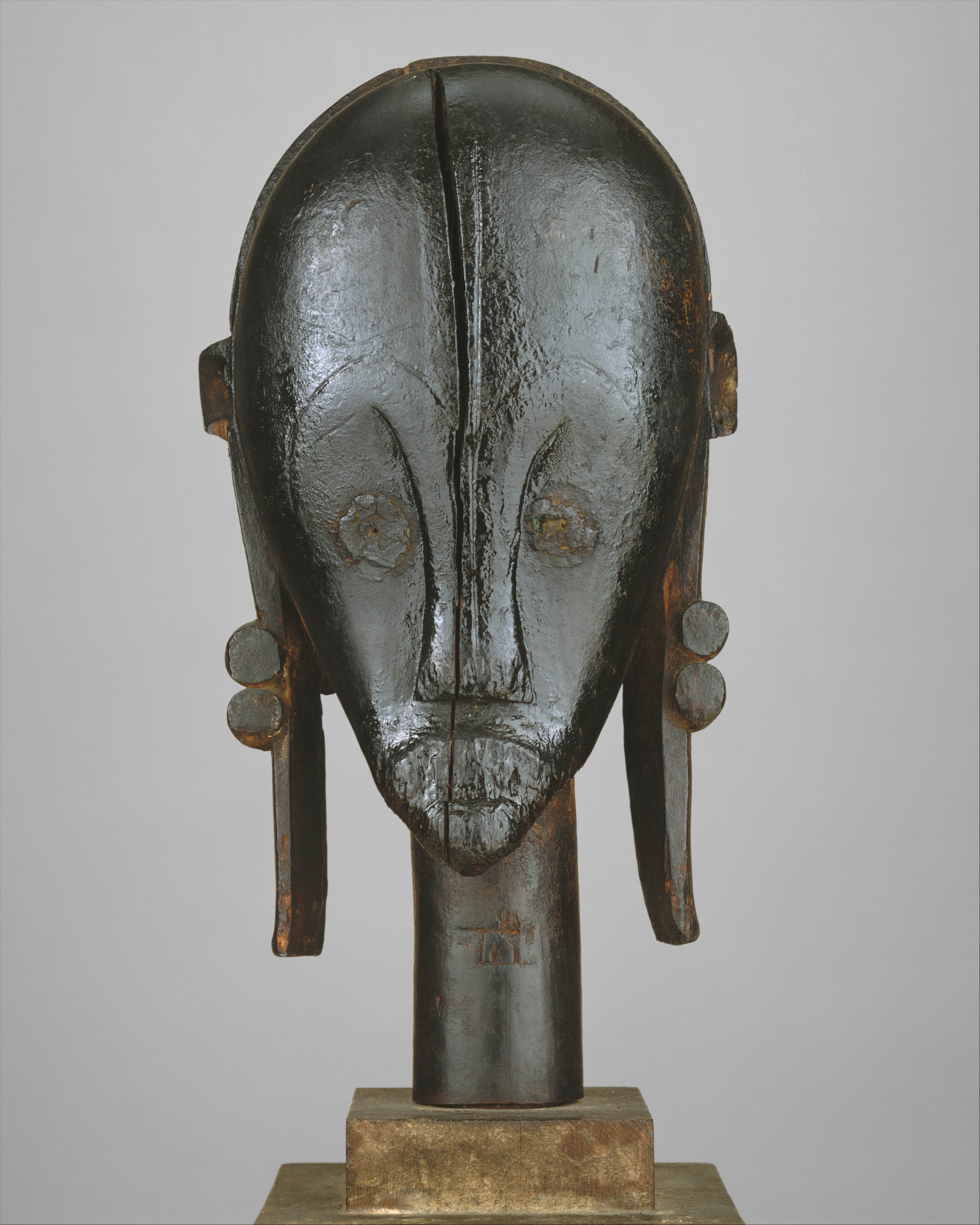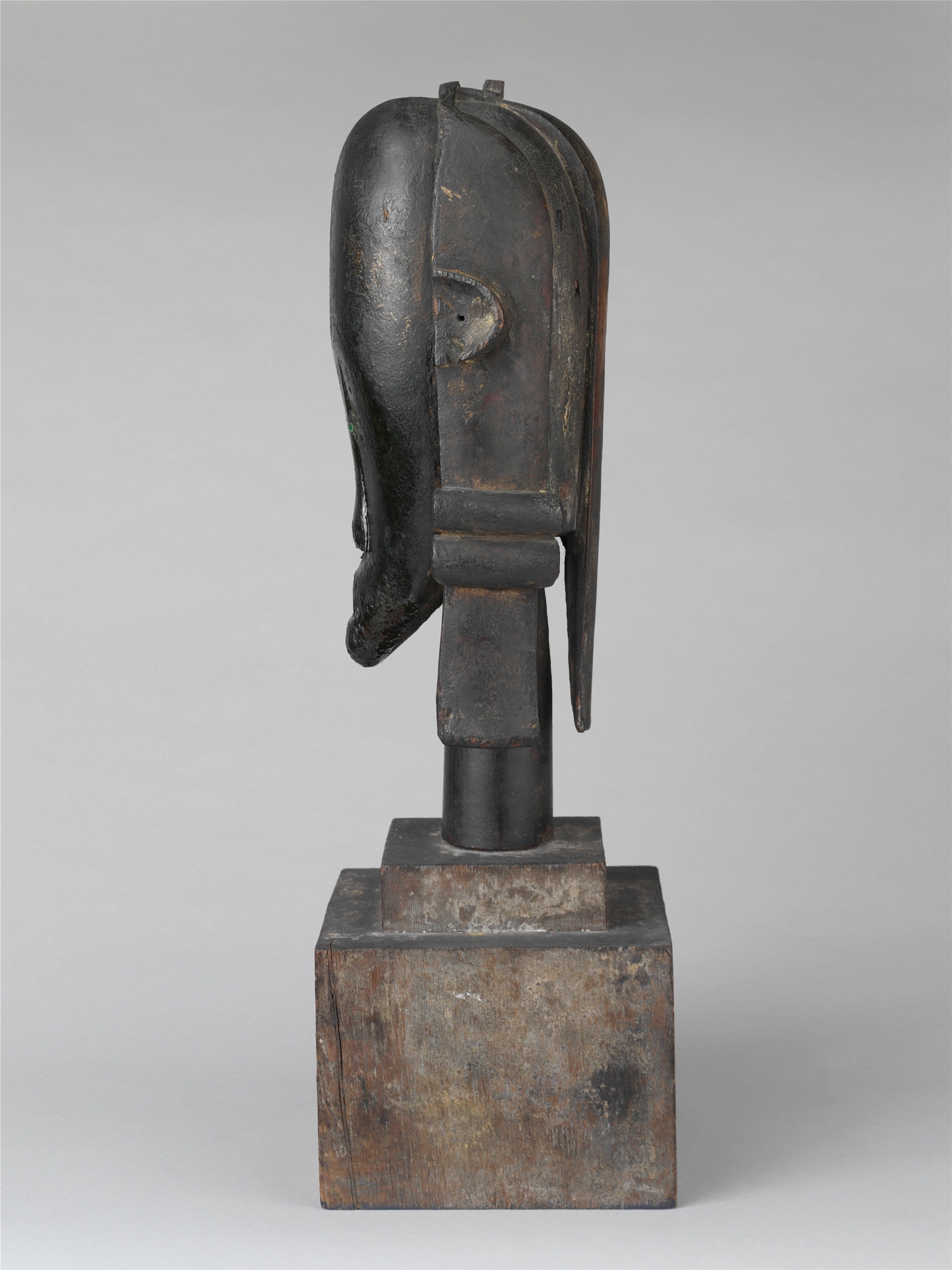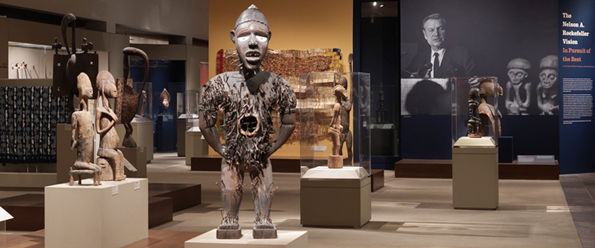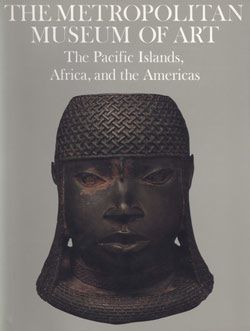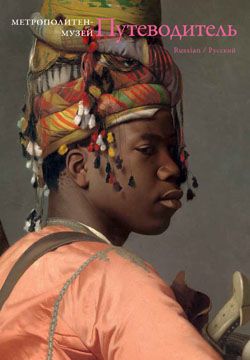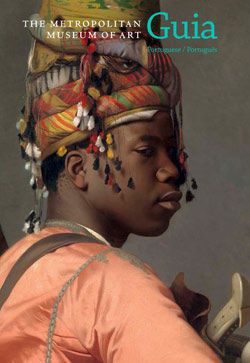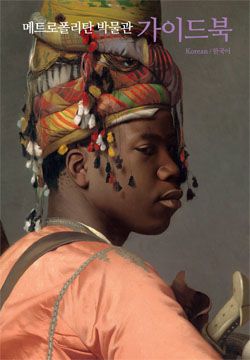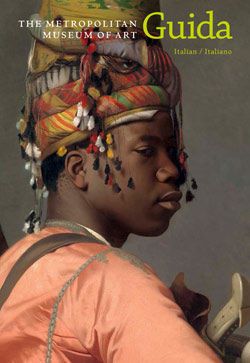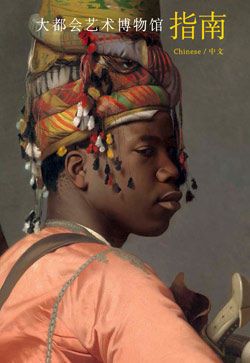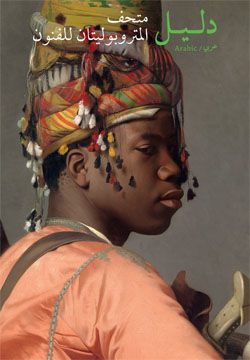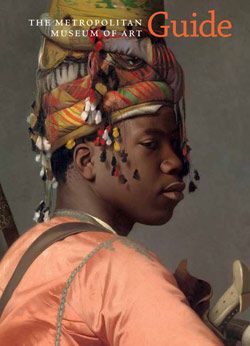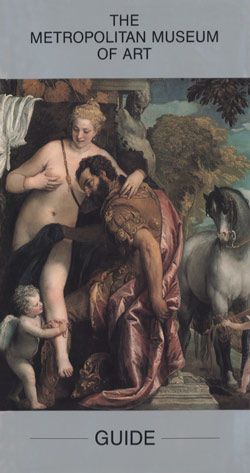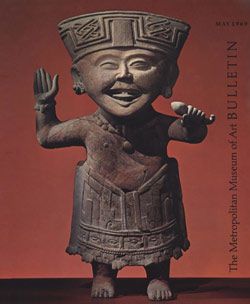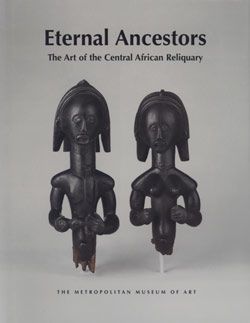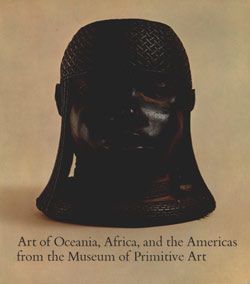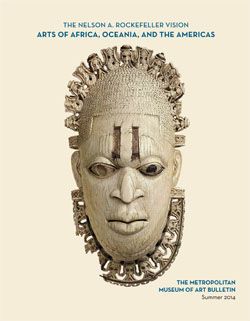Sculptural Bust from a Reliquary Ensemble (The Great Bieri)
Not on view
This sculptural creation is among the most frequently reproduced works of African art. Its visual impact derives from its bold hierarchic stance that distills the representation of a larger than life ancestral presence to a head with a penetrating gaze. The Fang master who produced it designed it to be positioned at the summit of a portable family altar that held precious relics of at least nine generations of influential members of an extended lineage within. While the relics were accessible to only initiated family members, the sculptural element visually summarized the importance of contents for all to view. The intense black of the wood was regularly enlivened with applications of palm oil that at once served to preserve the sculpture and to enhance the play of light on the surface. Historically Fang sculptors created free-standing heads, half-figures, and full figures to be integrated into bieri altar ensembles. This interpretation of that genre is the most monumental example that has survived. Known as "The Great Bieri," this icon has been a muse to artists both in the West and beyond since the early twentieth century.
In a memo sent to Rockefeller in November of 1959, Robert Goldwater apprised him that following the death of the sculptor Sir Jacob Epstein, the MPA would be offered the opportunity to be among the first to acquire works from the artist's renowned collection of African art. He noted: "The collection of the sculptor, Sir Jacob Epstein . . . contains some of the classics of primitive art. . . . Both René and I believe this is a wonderful chance to acquire pieces of unequalled quality from the famous collection of a famous artist." Goldwater and d'Harnoncourt selected five works from this collection, four of which were ultimately approved by Rockefeller. Most important among these was "The Great Bieri," which had come to represent, in Goldwater's words, a work "symbolic of [African] art." He celebrated its addition to the collection with a stand-alone publication that opened with the following statement: "For every style, and every period, in the history of the arts of mankind, a few works stand out above the rest. . . . We refer to these works as classic examples of their kind, and they impress themselves upon our memory with a particular clarity. The GREAT BIERI is such a work: it is the embodiment of Fang sculpture, and one of the great classics of African art."
Due to rights restrictions, this image cannot be enlarged, viewed at full screen, or downloaded.
This artwork is meant to be viewed from right to left. Scroll left to view more.


